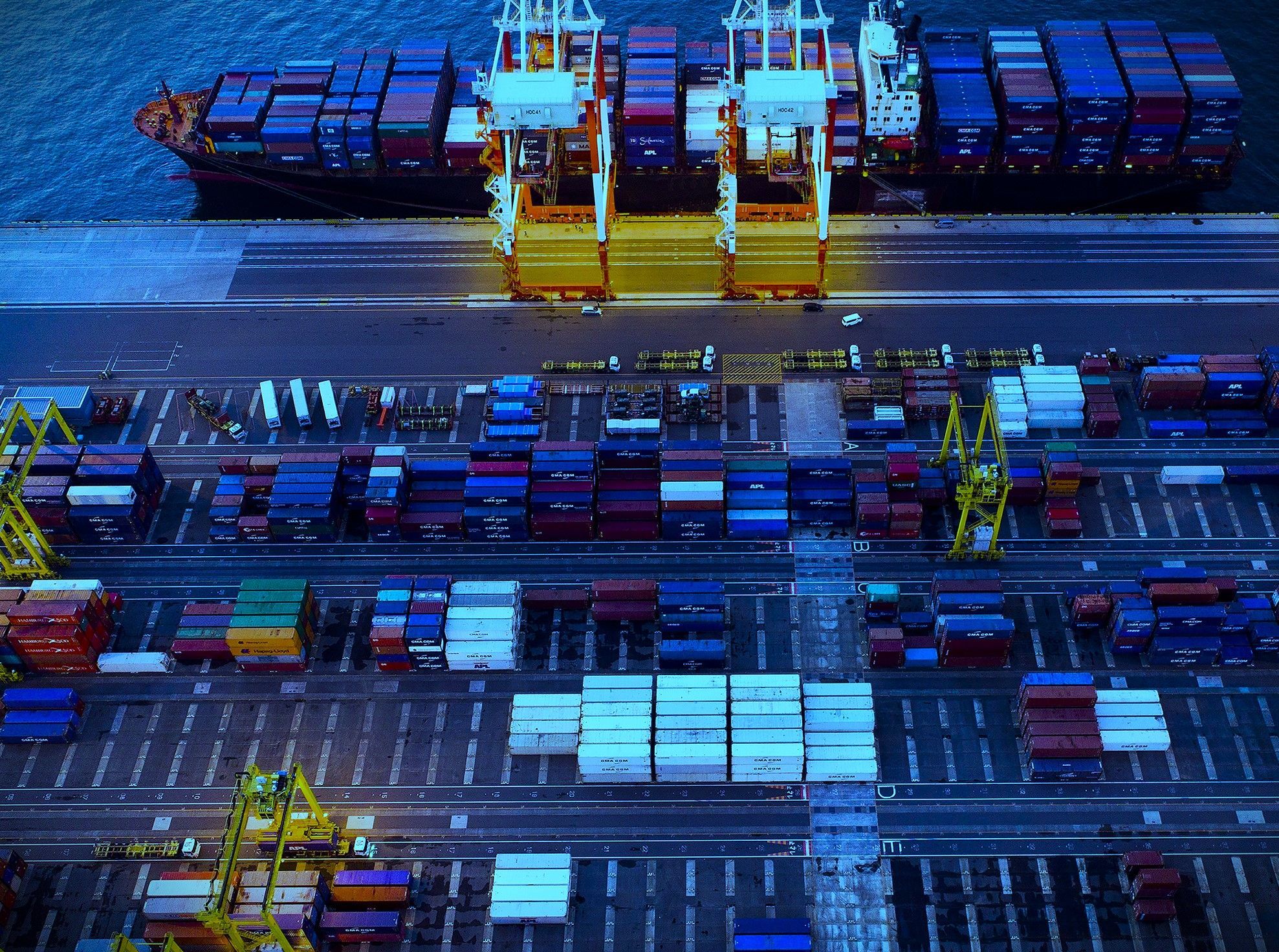
After almost a year of speculation and discussion, the U.S. Department of Commerce, Bureau of Industry and Security (BIS) is further tightening controls on exports, reexports, and transfers in-country (collectively, "exports") to China, Russia, Venezuela, and 20 additional countries, as well as enhancing reporting requirements to increase the U.S. government's visibility into exports to China, Russia, and Venezuela.
According to the notices published on April 28, 2020, these enhanced export controls are designed to minimize the risk of diversion and the use of technology, commodities, or software (collectively, "items") subject to U.S. export controls to benefit the military capabilities of these countries of concern.
The modifications were enacted to respond to the U.S. government's concern over the "increasing integration of civilian and military technology development in these countries of concern" and the difficulty to verify whether items are truly destined for civil end-users and civil end-uses in the countries. Blanket export license requirements have not been imposed and these countries remain open for U.S. business, so long as that business is for civilian and commercial end-uses.
The new requirements, which are being implemented through BIS's Export Administration Regulations (EAR), include:
- increasing the licensing requirements for exports to China, Russia, and Venezuela by adding more technologies, commodities, and software to the licensing requirements; expanding the definition of military end-use; and expanding the China requirements to cover military end-users;
- requiring an export license for items that previously were eligible for export under a license exception; and,
- imposing additional reporting requirements on exports to China, Venezuela, and Russia.
These changes, most of which were published as a final rule and become effective on June 29, 2020, will increase U.S. visibility and control over exports to China, Russia, and Venezuela. BIS also will have considerable discretion to determine which transactions with these countries will be ultimately authorized to move forward and will almost certainly be monitoring transactions in these countries that may have a potential military end-use or end-user. Accordingly, to ensure compliance with these new regulations, any U.S. company doing business with parties in China, Russia, or Venezuela should verify that they have export policies and procedures in place that include both classification and licensing procedures and robust Know Your Customer (KYC) measures.
Under the new military end-use and military end-user rule, a license must now be obtained if an exporter knows or has reason to know that an export of a designated item is intended, even in part, for a military end-use or military end-user in Russia, China, or Venezuela. Self-blinding or "sticking one's head in the sand" is not a defense to lack of knowledge. Accordingly, companies should perform and document their due diligence for any export to China, Russia, or Venezuela when one of the designated items is involved to help ensure compliance.
Exports for military end-use include situations in which the item will be: 1) incorporated into a military item, or 2) used to support or contribute to the operation, installation, maintenance, repair, overhaul, refurbishing, development, or production of a military item. The rule leaves considerable room for ambiguity regarding what constitutes "support" or "contribution" and when is a person "acting to support a military end-use."1 Consequently, companies will want to conduct and document robust due diligence to be confident that its export will be solely for civilian end-use by a civilian end-user.
The rule also adds new technologies, commodities, or software to the list of items that require a license,2 and expands the coverage of three export control classification numbers (ECCN) previously covered by the rule, ECCNs 3A992, 8A992, and 9A991. The addition of these items, particularly low-level semiconductors and electronics (ECCNs 3A991 and 3A992), mass market encryption items (ECCNs 5A992 and 5D992) and aircraft parts (ECCN 9A991), highlight the U.S. government's increasing commitment to limit the risk of diversion of U.S.-controlled items to a military end-use or end-user in Russia, China, and Venezuela no matter how ubiquitous the item may be.
B. Removal of License Exception CIV and Modification to License Exception APR
The rules also make significant changes to two license exceptions, CIV and APR. Effective June 29, the regulations will no longer include license exception Civil End Users (CIV). License exception CIV authorized exports of items controlled for national security reasons to approximately 20 countries,3 including Russia, China, and Venezuela, when the item was destined for civil end-users and civil-end-uses and applied to approximately 30 ECCNs (the list of the ECCNs is set forth in Appendix A).
U.S. companies that export semiconductors, telecommunications equipment, acoustic systems, optical equipment, and test, inspection, and production equipment for aircraft as well as parts and components for these items will likely be the most affected by the removal of the license exception. Like other changes provided by this rule, the requirement to obtain a license provides BIS with better visibility into details of and control over these exports. When license exception CIV was available, the U.S. company made the determination as to whether an end-use was civilian or military. Now, BIS and its sister agencies make that determination. The line between who is a civil end-user and what is a civil end-use can often be blurry, particularly in Russia, China, and Venezuela where the line between government-controlled and privately-owned is not clear. While BIS's license review policy for items destined for civil end-uses in these countries is favorable, we expect that the U.S. government will err on the side of "military" where transactions fall in the grey area.
The removal of license exception CIV also impacts intangible exports, including technology transfers to foreign national employees of U.S. companies ("deemed exports"). Companies should verify whether they are relying on license exception CIV to authorize any deemed exports. This change could particularly impact companies that design or develop microprocessor microcircuits, micro-computer microcircuits, and microcontroller microcircuit cores.
BIS also proposed modifications to license exception APR (Additional Permissive Reexports). Previously, license exception APR authorized the reexport of certain items from countries with similar export regimes as the United States to other, generally more sensitive, destinations. To be eligible for this license exception, the reexport must have been consistent with the export policies of the country of reexport and not export controlled by the U.S. government for nonproliferation, chemical and biological weapons, missile technologies, significant items, or crime control reasons.
Now, BIS intends to require licenses for reexports which were previously eligible for license exception APR. Eligible countries for APR reexports are those listed in Country Group D:1, the same countries affected by the removal of license exception CIV. If this rule is finalized, reexports of national security-controlled items to D:1 countries will require a BIS license—a change consistent with the new licensing requirements resulting from the removal of license exception CIV. This new license requirement, if enacted, will provide yet another window to increase the U.S. government's awareness of and control over shipments to China, Russia, and Venezuela. The public is invited to submit comments to this change to BIS no later than June 29, 2020, the same day the final rules are implemented.
C. Increased Reporting Requirements for Exports to China, Russia, and Venezuela
Another significant way the amendments increase the U.S. government's visibility into exports to China, Russia, and Venezuela is through increased reporting requirements. The new reporting requirements mandate that: 1) the electronic export information (EEI) be submitted for any shipment to China, Russia, or Venezuela (with minor carve-outs) even if valued below $2,500, and 2) the export classification or ECCN must be included in any required EEI submission. Prior to the changes, exports valued below $2,500 which did not require a license to China, Russia, and Venezuela, did not require the submission of an EEI, and the ECCN was only required for a subset of the exports.
These reporting requirements are likely to have a material impact on the number of export transactions reported to the U.S. government and will give BIS an additional window into business with China, Russia, and Venezuela. BIS has a longstanding and well-established practice of reviewing EEI submissions for licensing and enforcement reasons, including but not limited to verifying export authorizations and export classifications, looking for diversion concerns, and identifying end-use checks. It is not uncommon for BIS to commence an investigation based upon incorrect or incomplete EEI filings, and it will now have access to more of these filings.
D. Key Takeaways
Overall, these changes tighten the license requirements for and increase U.S. government visibility into exports to China, Russia, and Venezuela. Three key ways that U.S. companies can bolster their policies and procedures to ensure compliance with the increased export control licensing and reporting requirements are:
1. Review and update, or implement, KYC procedures and end-use and end-users questionnaires to ensure that the company's practices are consistent with the scope of the broader rules, particularly as they apply to military end-uses and end-users.
2. Verify whether the company is using license exception CIV as the authorization for any exports or deemed exports. If yes, immediately apply for licenses from BIS, as licenses can take several months to process. Submitting applications as soon as possible will increase the chance of approval before the amendment takes effect on June 29. If a foreign national is using license exception CIV, ensure that the foreign national is walled off from the national security-controlled technology until authorization can be obtained.
3. Promptly reach out to and coordinate closely with the company's logistics or shipping departments and freight forwarders to ensure compliance with the additional EEI reporting requirements for exports to China, Russia, and Venezuela.
The penalties for and enforcement of export control violations continue to increase. BIS may impose a monetary penalty of up to approximately $305,000 or twice the value of the transaction, whichever is greater, for each administrative violation of the EAR. Further, failure to satisfy the reporting requirements will likely result in a violation of multiple sets of regulations, including the EAR and the Census Bureau's Foreign Trade Regulations. In any enforcement matter, it is important to demonstrate to BIS that the company made good faith attempts to comply with the laws, and these enhanced compliance measures will help demonstrate a company's commitment to export control compliance.
For questions regarding these EAR amendments or export controls more generally, please contact a member of Wilson Sonsini's Export Controls group, which includes the following attorneys: Josephine Aiello LeBeau (jalebeau@wsgr.com, 202-973-8813), and Anne Seymour (aseymour@wsgr.com, 202-973-8874).
[1] The EAR defines a military end-user as the armed forces of the governments, including but not limited to army, navy, air force, coast guard, and marines, the national police, intelligence, and reconnaissance organizations as well as any person who actions or functions are intended to support military end-uses.
[2] Materials processing (ECCNs 2A290, 2A291, 2B999, 2D290); electronics (ECCNs 3A991, 3A992, 3A999, 3B991, 3B992, 3C992, 3D991) telecommunications (ECCNs 5B991), information security (ECCNs 5A992, 5D992), sensors and lasers (ECCNs 6A991, 6A996), and propulsion (ECCN 9B990).
[3] The countries that were eligible for license exception CIV exports are in Country Group D:1 of the EAR; the countries are were: Armenia, Azerbaijan, Belarus, Cambodia, China, Georgia, Iraq, Kazakhstan, North Korea, Kyrgyzstan, Laos, Libya, Macau, Moldova, Mongolia, Russia, Tajikistan, Turkmenistan, Ukraine, Uzbekistan, Venezuela, Vietnam, and Yemen.
Appendix A - ECCNs Previously Eligible for License Exception CIV
| CATEGORY | 0 | 1 | 2 | 3 | 4 | 5 | 6 | 7 | 8 | 9 |
| ECCN(s) | N/A | 1C006 1D001 1D002 |
2A001 | 3A001 3A002 3B001 3C002 3C005 3C006 3E002 |
4A003 | 5A001 5B001 5D001 |
6A001 6A004 6A005 6A008 6B004 6C004 6D003 |
N/A | 8A002 | 9B001 9B002 9B003 9B004 9B006 9D003 |
Contributors
- Privacy Policy
- Terms of Use
- Accessibility

